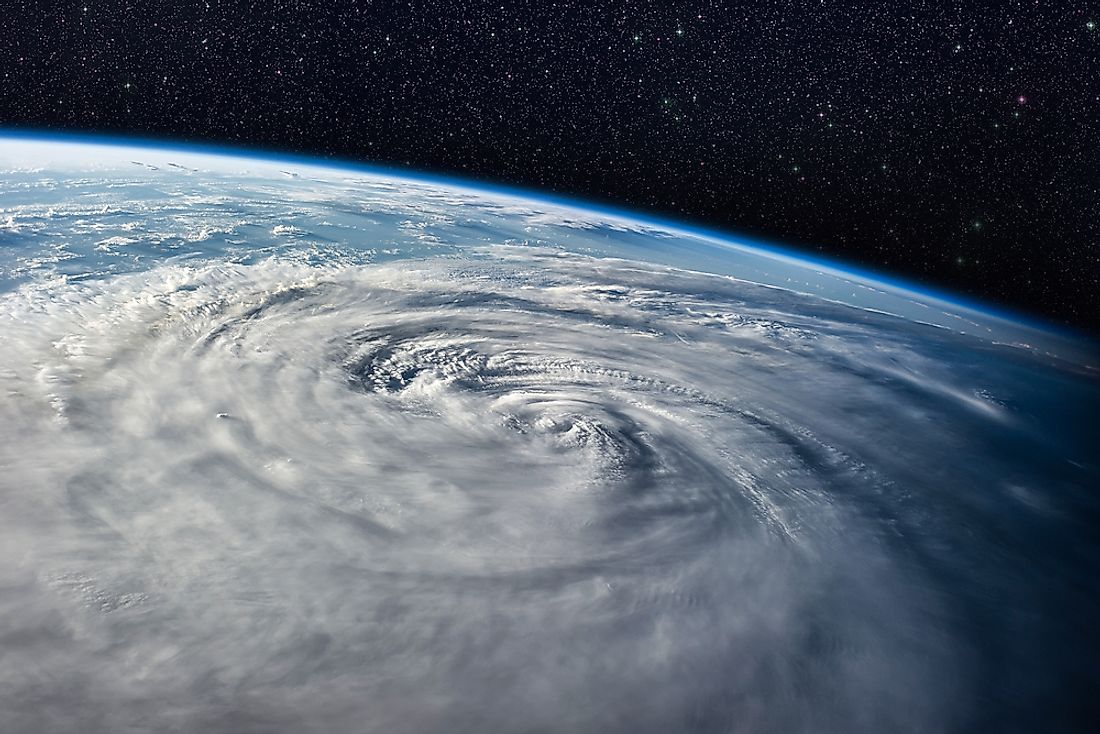What is the Difference Between a Hurricane and Typhoon?

Hurricanes, Cyclones, and Typhoons
Hurricanes, cyclones and typhoons are three of the most destructive natural phenomenons in the world. When ocean winds reach greater than 74 miles per hour, the storm is classified as a hurricane, cyclone or typhoon. Although the different names are used to describe the same weather pattern, the difference between the names depends on where the storm occurs.
The term hurricane is used when the storm occurs in the Caribbean Sea, Atlantic Ocean, or the central and northeastern part of the Pacific Ocean. The term cyclone is used when the storm occurs in the Bay of Bengal and the Arabian Sea. A tropical cyclone occurs in the southwestern Pacific Ocean and in the southern Indian Ocean. The term typhoon is used to describe the storms of the northwest Pacific Ocean.
What Are Hurricanes, Cyclones, and Typhoons?
Hurricanes, cyclones, and typhoons are a specific type of storm that form over large bodies of water. Gathering around a low point of atmospheric pressure, the storms are large masses of air. “The Eye” is used to describe the centre of the storm which can measure between 30 miles to 120 miles in diameter. Being the centre of low pressure, the eye pulls the surrounding air downward into a spiral formation. As the air begins to spiral, the winds gain more speed. The spiral moves in a counterclockwise direction in the Northern Hemisphere and in a clockwise direction in the Southern Hemisphere.
The speed of the winds can vary from 74 miles per hour to 150 miles per hours. Scientists often measure the wind speeds using a system of categories. At 111 miles per hour, the storm is classified as “intense”. Category 5, the strongest classification, is used when the wind reaches 150 miles per hour. Hurricanes, cyclones, and typhoons move through the ocean or sea, generally following the flow of the closest jet stream. Sometimes the storms can reach land where the high speed winds, abnormally high waves, torrential rain and flooding can cause serious damage.
When Do Hurricanes, Cyclones, and Typhoons Occur?
Although these powerful storms can occur at any time of the year, they are more likely to form during certain seasons. These seasons vary depending on the body of water. For example, the hurricane season in the Atlantic and central Pacific Oceans runs from June to November. In the northern and eastern Pacific, the chances of a storm are highest from May to November. For the South Pacific Ocean, cyclone season is between November and April. The Bay of Bengal experiences two cyclone seasons from September to November and from April to June.
Effect of Global Warming
Recently, scientists have been researching whether or not global warming could have an effect on the frequency of hurricane, cyclone, and typhoon occurrences. It is believed that there is a correlation between air and ocean temperatures. Warm ocean temperatures are needed for storms to form. Records from the 1970s through the 2000s indicate that the number of Category 4 and 5 storms has nearly doubled around the globe. Additionally, the wind speeds of these storms have increased by 50% during that time frame. Despite this evidence, the scientific community has yet to reach an agreement on the effects global warming may have on hurricanes, cyclones, and typhoons.











